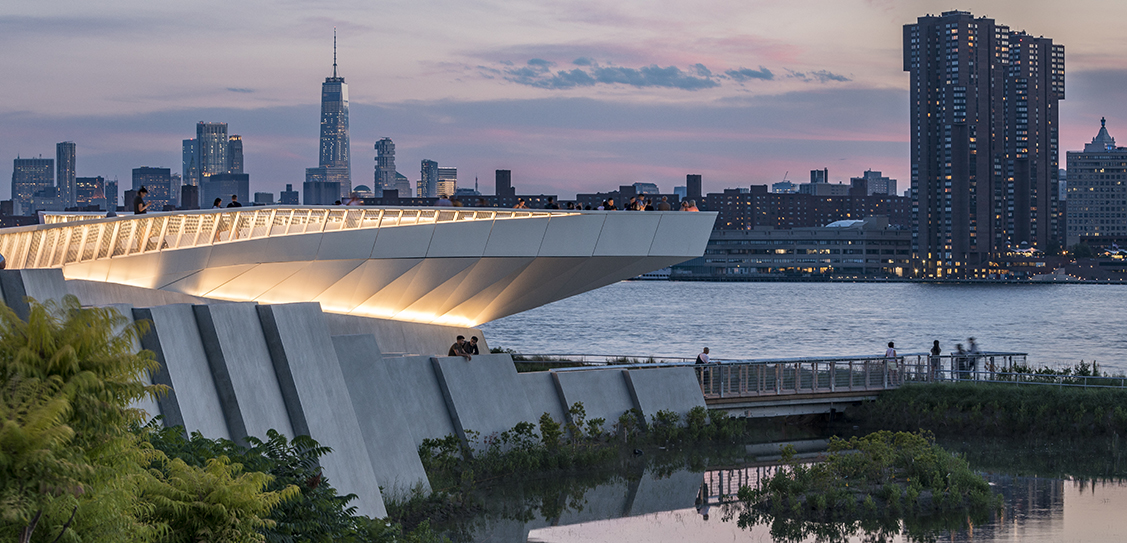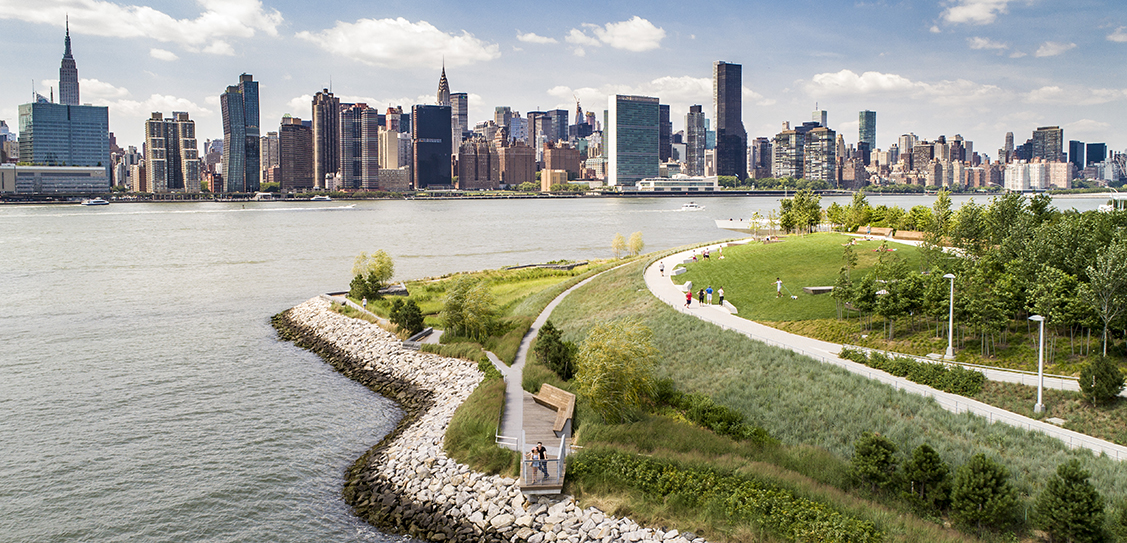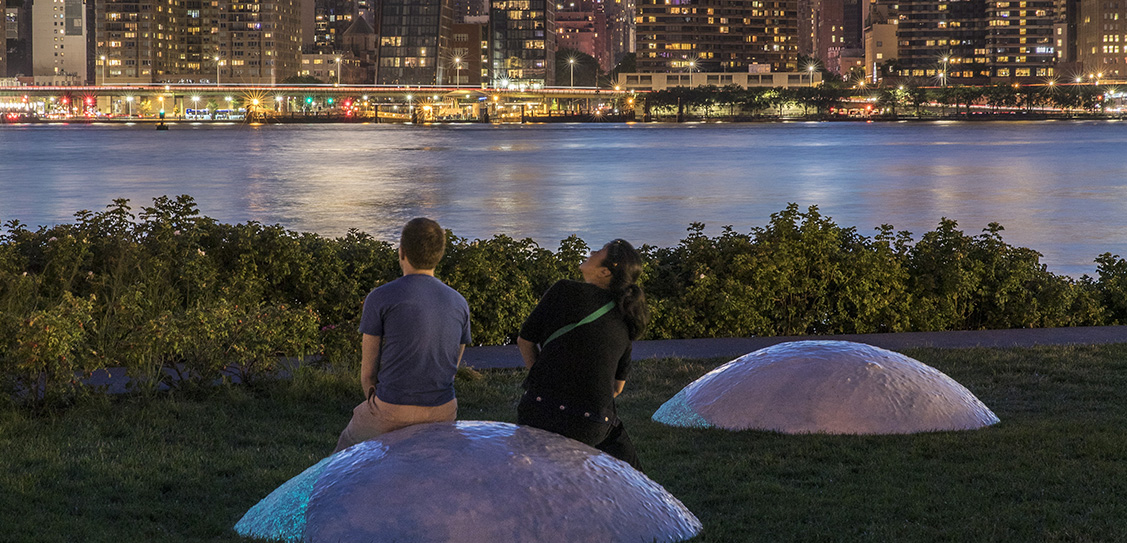SWA/Balsley announced that Hunter’s Point South Waterfront Park, one of New York City’s most ambitious parkland developments in decades, has been awarded a 2020 ULI New York Awards for Excellence, in the “Excellence in Civic Development” category, and a ‘Special Recognition’ Award for Excellence in Design. A design collaboration between SWA/Balsley and Weiss/Manfredi, with ARUP as the prime consultant and infrastructure designer, the park’s integrated design weaves together infrastructure, landscape, architecture, and art; and presents a new model of urban ecology and a prototype for innovative sustainable design.
Hunter’s Point South Waterfront Park aspires to be a transformative project for both Queens and New York City as a whole. Two hundred years ago the site was a series of wetlands, however, after years as an industrial hub and rail station, all signs of its ecologically rich history were eliminated. By focusing on designing a park, streetscape, and infrastructural system that is innovative and aspirational, the park weaves together new relationships between architecture, landscape, and engineering to create a place of both ecological rejuvenation and active recreation.
The park’s design embraces the site’s diverse historical identities and serves as a new model for waterfront resilience and sustainability by implementing a “soft” approach to protecting the water’s edge from floodwaters. A continuous meandering causeway, elevated slightly above the river, offers a walk along the river’s edge and protects nearly an acre of newly established wetlands.
The design also leverages the site’s dramatic and varied topography with a shaded grassy promontory, a new island reached by a pedestrian bridge, a kayak launch, exercise and picnic terraces, a collection of intimate “break-out” lounges off the pathways, and a dramatic cantilevered overlook that hovers 25 ft above the wetlands and offers panoramic views of the Manhattan skyline.
A new multi-use green grassy oval and an adjacent canopy structure define the most generously open part of the site and serve as key pieces of resilient landscape infrastructure. The oval was designed to be inundated during flooding events and detains water which drains back to the river. This green is framed by a continuous path and pleated steel shade canopy on the south side which follows the curve of the oval and offers shelter for a ferry stop and a concession building.
Sited adjacent to a new school, public library, and an emerging residential development of 5,000 permanently affordable units, the park provides a public front door and new open spaces for recreation at the heart of a growing community.



